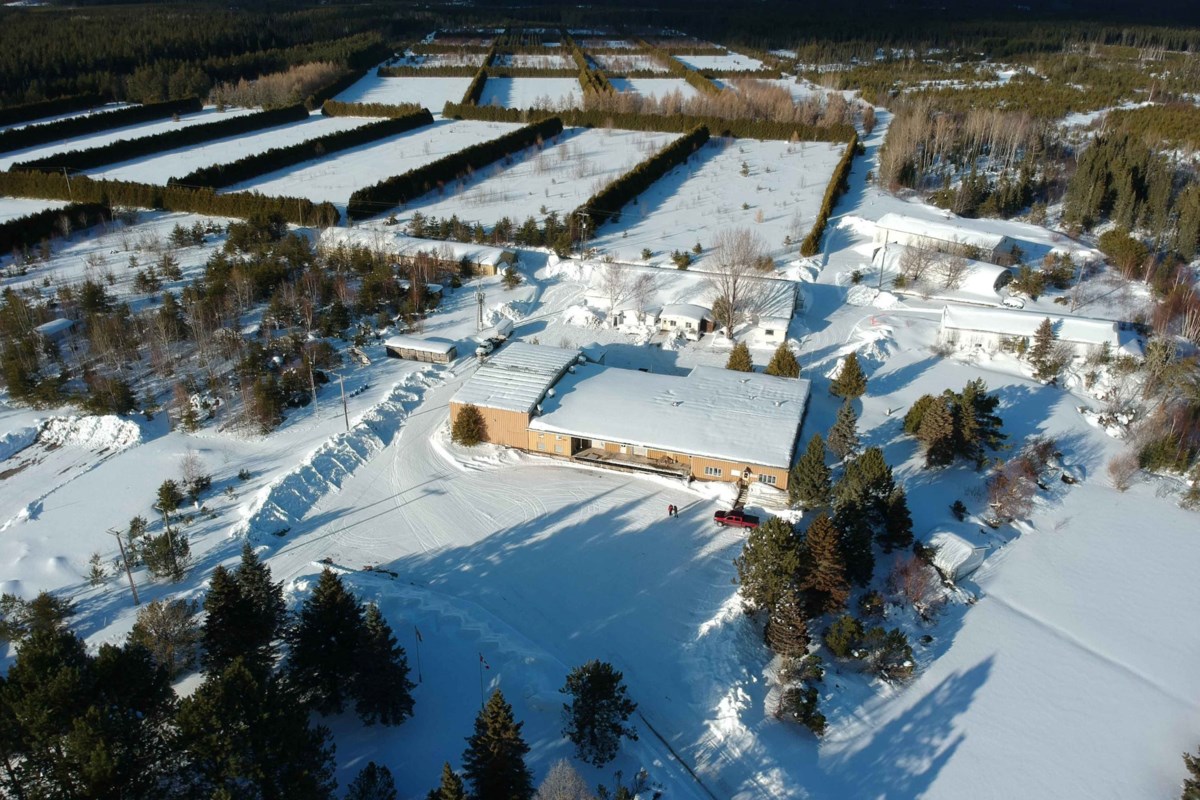Treasury Metals president-CEO Jeremy Wyeth feels the Goliath Gold Complex outside Dryden is being a tad undervalued and underappreciated by the market.
At 0.38 cents a share in mid-July, Wyeth attributes the lagging stock price to Treasury’s 15-year “legacy” in the area, of hawking the vast gold potential in the ground but not really delivering on anything tangible with a couple of “false starts” thrown in.
But the former developer of the Victor diamond mine in the James Bay region sees an exciting upside to grow the sprawling Goliath Gold Complex, situated just north of the village of Wabigoon on the Trans-Canada Highway in northwestern Ontario.
Wyeth delivered an update on Goliath in a webcast last week with Dan Wilton, the CEO of First Mining Gold.
Treasury’s 30-square-kilometre land package of claims runs in a corridor stretching southwest to northeast between Dryden and Sioux Lookout.
What’s being proposed there is a series of open pits, with underground potential, and a processing mill operation. For now, the mine life is pegged at 13 years.
He and Wilton theorized Treasury is probably being tarred by investors with the same brush as other gold mine developers in Northern Ontario, struggling with blown-out construction costs due to rampant inflation, global supply chain difficulties and the challenges of building a mine during the middle of a pandemic.
“The most expensive thing you could do is have a crew there ready to build and not working,” said Wilton, who has his hands full developing the proposed Springpole open-pit mine project, 100 kilometres northeast of Red Lake.
First Mining Gold is a “strategic investor” in Treasury, after hiving off its Goldlund property to Treasury in 2020 that effectively doubled the size of the Goliath Gold holdings.
Wyeth expressed confidence they won’t see the same cost blowups when their project prefeasibility study comes out later this year.
“It’s not a $2-billion job; it’s a $230-million job, 5,000 tonnes per day. It’s not of the same magnitude that we see elsewhere.”
Wyeth and Wilton talked about the project milestones achieved this year and what’s on tap in the months ahead.
Want to read more stories about business in the North? Subscribe to our newsletter.
Treasury released a new gold resource estimate in April showing an almost 3-million-ounce measured, indicated and inferred gold resource at three deposits. But the company sees tremendous opportunity to grow the resource as only a fraction of the combined Goliath and Goldlund properties have been fully explored.
The federal environmental assessment process is complete and Treasury is currently navigating through the provincial process that include discussions with nearby First Nation communities on the mine’s impact.
Once the prefeasibility study comes out in three or four months time, the Treasury team will move into the final feasibility study stage, due out in mid-2023.
By then, the company should have all its mine permits in hand and First Nation agreements in place. A construction decision will be made in the latter half of next year.
An 18- to 24-month construction period would follow, generally placing the start of mining at three-and-half to four years away.
Confident with his team of proven mine builders and operators, Wyeth said one of the “puzzle pieces” Goliath has working in its favour is its great infrastructure. There are highways, rail, power and gas lines either running through their property or is close by.
The company is also in good shape financially, cashed up with $25 million in the bank, thanks to a royalty financing deal with Sprott.
Wyeth insists there’s enormous opportunity to discover more gold, pointing out areas on the property — dubbed Far East, Fold Nose and Interlakes — where they can surely add more ounces.
“This is not a property with a shortage of targets. We’re just scratching the surface at the moment,” he said. “With critical mass, we can build this and we can keep growing this as we go along.”
The exploration team seems to have a good handle on the area’s geological structure and is taking a prudent approach to drilling this year with its $6-million, 25,000-metre program.
Sign up for the Sudbury Mining Solutions weekly newsletter here.
With supply chain pressures and inflation affecting all business, Wyeth said the company is being very smart, systematic and careful in how they spend money.
For example, they’re considering using Railveyor technology to transport ore material across the property instead of using haul trucks. It would add to the initial construction price tag but drops their transport costs from $6.50 a tonne to 50 cents.
In reflecting on tailings dam disasters in Brazil, the company is reconsidering how it will store tailings and other mine waste.
Wyeth said using mined-out pits provides a “better technical solution” to store tailings. It doesn’t enlarge their environmental footprint and allows the company to do “progressive reclamation” at Goliath that’s easier to build, maintain, close and monitor at a cheaper price.
To mitigate risks associated with supply chain issues, Wyeth mentioned Treasury is inviting collaboration with other mining companies in the area to consider joint warehousing in Dryden to realize some potential savings.
“There are isolated examples of mining companies collaborating effectively,” responded Wllton, “but there should be more of them.”
Wyeth argues these supply chain challenges require a difference approach, as the same pain is being experienced by all with no idea on how long the current situation will last.
Wyeth said they’re also making progress in building and maintaining relationships with neighbouring First Nation communities, many of whom are familiar with the industry and have signed impact benefit agreements with other mining companies in the region.
“It’s encouraging and positive to see that.”
The re-election of the Doug Ford government, provincially, offers change and continuity. Kenora MPP and cabinet minister Greg Rickford’s mega-ministry has been split apart, and miners like Treasury are working with three ministers in three portfolios that were previously combined.
“The new minister of mines (Timmins’ George Pirie) has got a stronger history in mining, understands mining, so I think that’s positive for us,” said Wyeth.
He anticipates no great regulatory changes and, in dealing with three ministries, Wyeth feels they might see greater efficiencies from the bureaucracy.
Ian Ross



